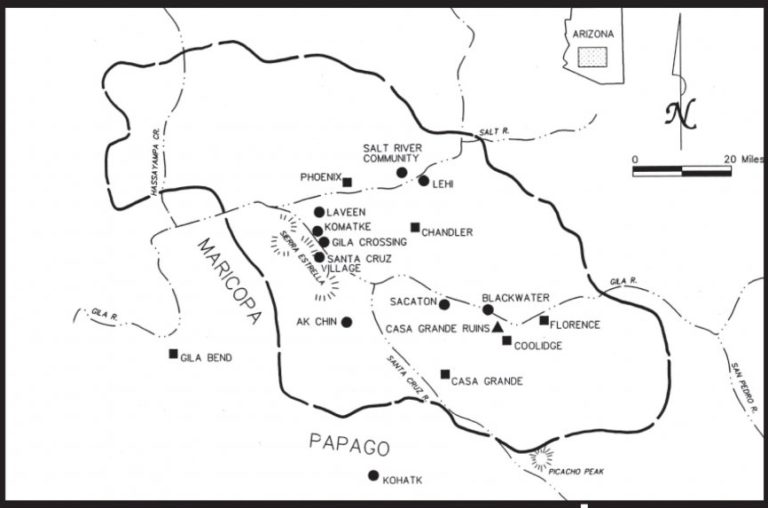

Whatever the answer, however, people remained, descendants of whom include the Pima and Tohono O'odham of southern Arizona. The meaning of HOHOKAM is a member of a prehistoric desert culture of the southwestern U.S. Why this once-flourishing cultural pattern came to an end remains a mystery. Frequency: A member of a Native American culture flourishing from about the 3rd century bc to the mid-15th century ad in south-central Arizona, noted for the construction of an extensive system of irrigation canals. Hohokam farmers truly had mastered the desert, in the sense that they were able to successfully grow crops in the same locations for hundreds of years and create a large, well-organized, prospering society. Literature Different view of the ruins of a Hohokamhouse. 1100s through 1400s, there were tens of thousands of Hohokam people living in large villages scattered throughout the Phoenix and Tucson basins. The term Hohokamis a derivative of the Ootham word Huhugam (pronounced hoo-hoo-gahm), which is literally translated as 'those who have gone before,' meaning 'The Ancestors.' WikiMatrix The only name we have for them is one the Pima Indians gave them: Hohokamthose who vanished. At the cultural peak of the Hohokam in the “Classic” period of the A.D. The Hohokam represent one of the largest and most complex societies in the Southwest. Hohokam definition, of, belonging to, or characteristic of an American Indian culture of the central and southern deserts of Arizona, about a.d. Hohokam villages also show that society was organized in a hierarchical fashion. Unlike ancient pueblo towns, which often were abandoned after a few decades, some Hohokam villages were continuously occupied for up to 1,500 years or more. Hohokam villages are remarkable in the ancient Southwest for their stability. Later, the low circular mounds were replaced by much larger, rectangular “platform mounds” of earth, rock, and adobe covered with structures and courtyards built on top. Early in the Hohokam cultural sequence these consisted of ball courts and small, low, circular mounds made of earth. Within the villages were monumental public works. Accompanying the canals were extensive villages that covered hundreds of acres and were occupied by several hundred people.

Not even the complex societies in Mesoamerica had such extensive irrigation canals. In fact, the Hohokam had the largest and most complex irrigation systems of any culture in the New World north of Peru. The Hohokam are probably most famous for their creation of extensive irrigation canals along the Salt and Gila rivers. During this time, they achieved remarkable successes. 1450, barely 90 years before Spanish explorers arrived in the Southwest. The Hohokam were, in the words of archeologist Emil Haury, “masters of the desert.” Their cultural pattern existed from the first years A.D. Hohokam ruins at Casa Grande Ruins National Monument


 0 kommentar(er)
0 kommentar(er)
